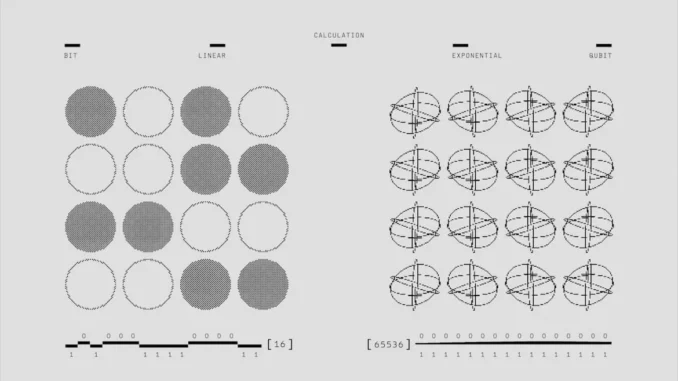
Summary
Quantum computing’s imminent rise is reshaping the digital security landscape, pushing traditional encryption to its limits. The burgeoning post-quantum cryptography market, valued at $356.4 million in 2023, is set to skyrocket to $17.69 billion by 2034, with a compound annual growth rate of 41.47%. Key sectors such as finance, healthcare, and national defence are accelerating the adoption of quantum-resistant solutions, driven by the necessity to protect sensitive data from potential quantum threats.
Main Article
Quantum Computing Threats and Market Response
Quantum computing represents a paradigm shift with its exceptional processing capabilities, poised to tackle problems unsolvable by classical computers. However, this technological leap poses a formidable challenge to current cryptographic systems. Traditional encryption methods like RSA and ECC, which are based on complex mathematical problems, could be easily compromised by quantum computers’ ability to solve these problems more efficiently.
In response, the post-quantum cryptography market is rapidly gaining traction. With its current valuation at approximately $356.4 million as of 2023, projections indicate a surge to $17.69 billion by 2034, reflecting an impressive CAGR of 41.47%. This growth is driven by an urgent need for encryption solutions that can withstand quantum attacks, ensuring the security of sensitive information.
Driving Factors Behind Market Expansion
The surge in demand for post-quantum cryptography is fuelled by several key factors. Heightened awareness of quantum computing’s potential risks has catalysed industries, notably finance, healthcare, and national defence, to prioritise secure cryptographic solutions. These sectors, often targeted by cyber threats, are at the forefront of integrating quantum-safe technologies.
Governments worldwide are also instrumental in propelling this market forward. By allocating resources and formulating policies to support quantum-resistant technologies, they are positioning their nations for the impending quantum era. North America, for example, is witnessing notable investments in R&D, which are fostering innovations in cryptographic algorithms and protocols.
Innovations in Cryptographic Algorithms
Central to post-quantum cryptography is the development of algorithms resilient to the capabilities of quantum computers. Research efforts are exploring various techniques, such as lattice-based, hash-based, and multivariate polynomial-based cryptography. These algorithms utilise mathematical problems that are believed to remain robust against quantum attacks.
Among these, lattice-based cryptography has emerged as a leading contender due to its formidable security and operational efficiency. It capitalises on the complexity of lattice problems, a challenge even for quantum computers. Consequently, lattice-based schemes are under active development as potential standards for post-quantum encryption.
Standardisation and Collaborative Efforts
The widespread adoption of post-quantum cryptography depends significantly on establishing universal protocols and frameworks. Organisations like the National Institute of Standards and Technology (NIST) are spearheading global initiatives to evaluate and endorse algorithms suitable for post-quantum encryption. Through a collaborative approach with academia, industry, and governments, NIST aims to create robust standards that can be universally implemented.
Additionally, collaboration across sectors is crucial to address the technical hurdles of transitioning to quantum-safe systems. Companies are forming strategic alliances to merge resources and expertise, accelerating the development and deployment of post-quantum solutions. Such cooperation ensures the seamless integration of new cryptographic methods into existing digital infrastructures.
Detailed Analysis
The advent of quantum computing is set to redefine cybersecurity, highlighting the inadequacies of traditional encryption methods and underscoring the critical need for post-quantum cryptographic solutions. This transition aligns with broader technological and economic trends, emphasising the role of innovation and cross-sector collaboration in addressing emergent digital threats. “The evolution towards quantum-safe encryption is not just a technological necessity; it’s an economic imperative,” states Edward Larson, a seasoned industry commentator. The focus on R&D and government intervention further illustrates the strategic importance placed on cybersecurity in a quantum future.
Further Development
As the narrative of quantum computing and cryptography unfolds, the spotlight will remain on the evolution of post-quantum standards and the dynamics of global collaboration. Continuous advancements in cryptographic research and the forthcoming results from institutions like NIST will be pivotal. Readers are encouraged to stay informed as we cover the developments in this rapidly growing sector, highlighting breakthroughs and strategic shifts that will shape the future of digital security in the quantum era.

